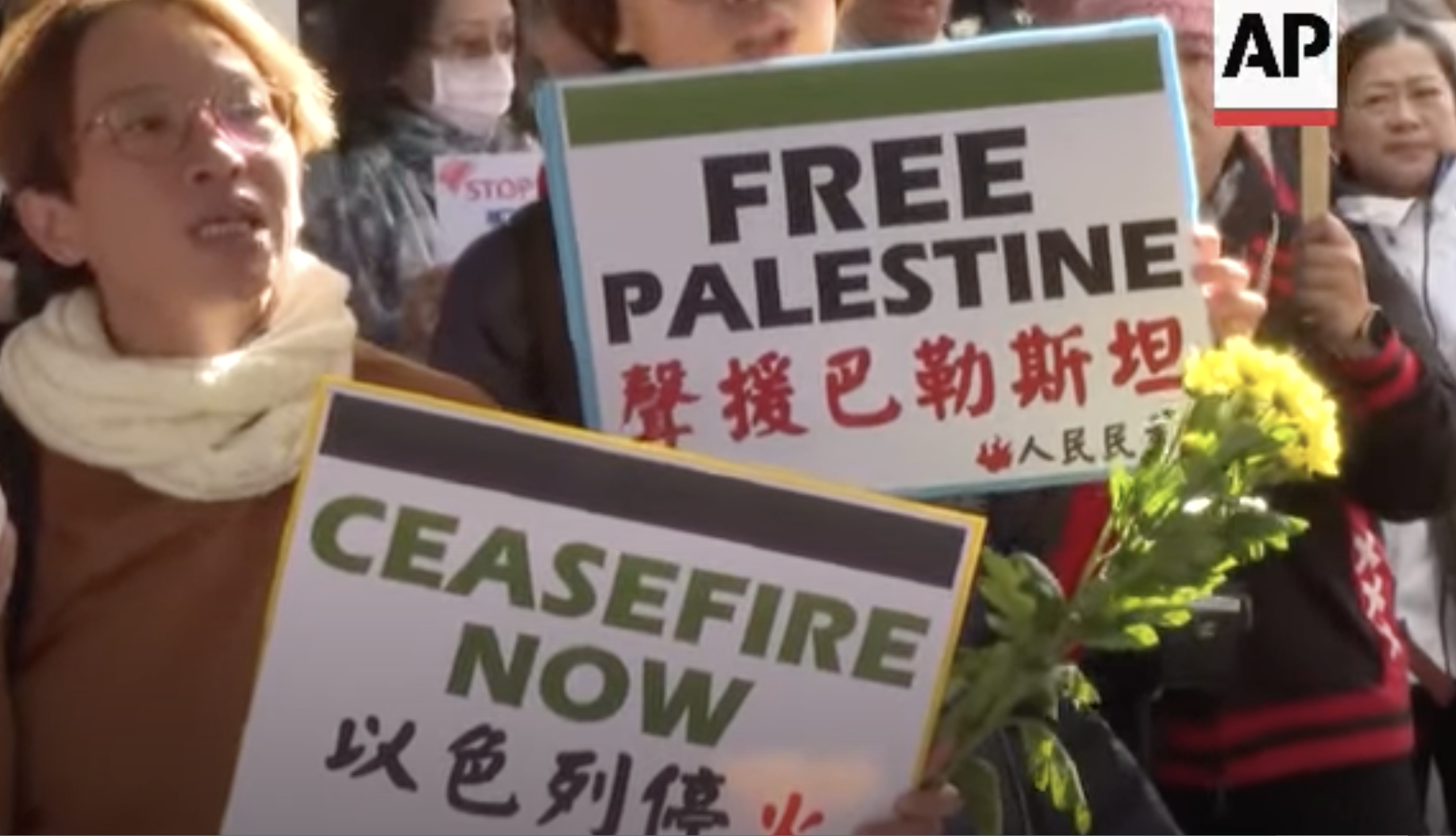
Reproduction of The Hiroshima Panels (原爆の図) by Maruki Iri and Maruki Toshi, displayed at Higashi Honganji Temple Gallery, Kyoto. Photo courtesy Nevin Thompson.
US Ambassador to Japan Caroline Kennedy visited Hiroshima in April, generating goodwill from her Japanese hosts.
今日広島を訪れて、核兵器のない世界のために努力を続けることが大事なのだという思いを新たにしました
— キャロライン・ケネディ駐日米国大使 (@CarolineKennedy) April 17, 2015
Visiting Hiroshima is a profound reminder that we should continue working toward a world without nuclear weapons
— キャロライン・ケネディ駐日米国大使 (@CarolineKennedy) April 17, 2015
As US ambassador to Japan, Kennedy attended the 69th anniversary of the atomic bombing in August 2014 – only the second time a sitting US ambassador had attended the annual memorial service for victims of the 1945 Hiroshima bombing.
John Roos, Kennedy's predecessor as US Ambassador to Japan, was the first US representative ever to attend the official annual August memorial service in Hiroshima. Roos attended the service in August, 2010, marking the 65th anniversary of the atomic bombings and the end of World War II.
As Caroline Kennedy's predecessor, John Roos also established deeper ties between the US and Japan following the 2011 Tohoku disaster, where he helped lead a massive American aid and recovery effort in Japan's stricken northeast.
What also makes Ambassador Kennedy's April visit to Hiroshima notable is that she also visited Hiroshima's Peace Memorial Museum and laid a wreath at the cenotaph for A-bomb victims — unprecedented for a sitting US ambassador.
Ambassador Kennedy, the only surviving offspring of President John F. Kennedy, had first visited the Hiroshima museum in 1978 when she was accompanied her uncle, then-US Senator Edward Kennedy.
The American ambassador's decision to visit the Hiroshima memorial and Peace Museum is significant to many Japanese people, and follows President Obama's 2009 and 2013 calls for nuclear disarmament. Residents of Hiroshima and Nagasaki, the only two cities in the world to experience a nuclear attack so far, have long called for the abolition of nuclear weapons.
Kennedy's visit to Hiroshima comes exactly one month after Hiroshima Mayor Kazumi Matsui expressed disappointment over Russian President Vladimir Putin’s remarks in a documentary broadcast that Moscow was ready to put its nuclear weapons on alert amid the crisis in Ukraine, just as Japan was finalizing a trade agreement with Russia; Japan later imposed sanctions on Russia over the Crimean invasion.
【#広島】「被爆地ヒロシマの願いに背くものだ」広島市長、プーチン氏のウクライナ危機・核兵器準備発言を批判 毎日新聞 3月16日(月)21時50分配信 ロシアのプーチン大統領が、ウクライナ南部クリミアを1年前に… http://t.co/YM7KdNV8EW
— DatNews (@DatNews) March 16, 2015
“Russia is ignoring the pleas of Hiroshima, (a city that has experienced first-hand the horror atomic bombing).” – Hiroshima mayor criticizes Russian President Vladmir Putin over Ukraine nuclear weapons remarks. [Putin says he was prepared to put nuclear weapons on standby during Crimea crisis one year ago.]
Russia's ambassador to Japan, Evgeny Afanasiev responded:
【New】「ロシアの核を責める前に、原爆投下したアメリカに抗議を」 広島市長に駐日大使が反論 http://t.co/WQRoQ5RloT pic.twitter.com/Yo9ipn31ho — ハフィントンポスト日本版 (@HuffPostJapan) April 13, 2015
“Before criticizing Russia over nuclear weapons, talk to America, the country who dropped the bomb on you (first).” Russian ambassador's response to Hiroshima mayor.
However, many Hiroshima residents were just glad that Kennedy threw the opening pitch for hometown baseball favorites the Hiroshima Carp.
Go Carp! pic.twitter.com/AGHE8gw3uq
— キャロライン・ケネディ駐日米国大使 (@CarolineKennedy) April 17, 2015







5 comments